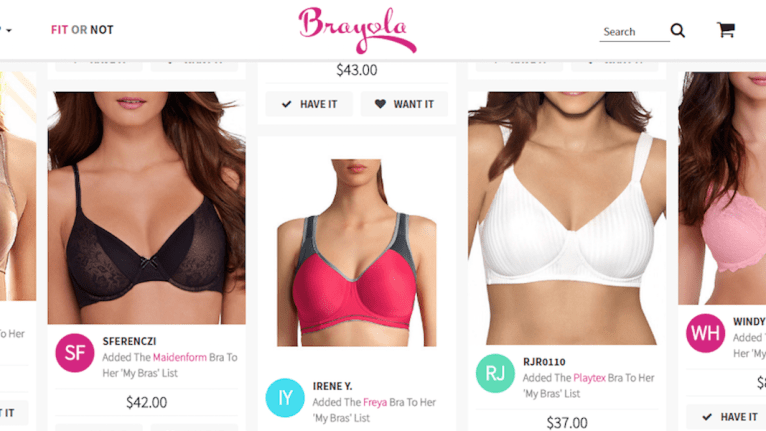
When PYMNTS spoke to Orit Hashay, Israeli startup Brayola’s CEO and founder, she explained how she came to have a very unique vision in the world of commerce. After all, she’s responsible for building something that’s been called both “the OkCupid of bra shopping” and “the world’s first social network for boobs.”
Now, of course, when it comes to the “world’s first social network for boobs,” you can fill in your own joke — trying 4chan was our suggestion at the time, for there is no larger trove of boobery on the web. But the reality for women searching for the right fit in something they wear day in and day out, is that a badly fitting bra is far from funny.
“The problem is every brand, even huge brands like Victoria’s Secret, has very specific sizing, so they don’t do plus size and they have pretty narrow prices,” Hashay said. “And I realized I need everything so I can help women to buy bras they’ve never bought before or [never] would have thought of buying before.”
Hashay does not think every breast is a unique snowflake — far from it, in fact. She said one of her earliest observations is that no one is special in this regard, and somewhere in the world is a woman with the exact same measurements and preferences for her undergarments. The key, something Brayola brings to the market, is the ability for the world’s “bra twins” to find each other and share insights on who is making the best bra for them.
“Maybe you don’t look the same,” Hashay said. “You don’t dress the same. You have a totally different face — but your breasts and bras taste are identical. We use an algorithm to help you find that person and borrow their best ideas on bras.”
To use the service, a shopper enters in her vital information — her sizing, her preferred styling and the Brayola secret sauce: information on the bras she likes in her drawer right now. Today, the site boasts more than 50 million listed recommendations.
From there, the algorithm takes over and uses the information to match the shopper to her lingerie twin. Once it finds said match, the system sends back a recommendation to the user on what her next bra purchase should be — and, of course, it gives her an option to buy it.
The algorithm is smart, meaning the more the consumer shops, the better it gets at knowing her tastes and preferences. It uses data on conversions from recommendations to make sure it is always sharpening its ability to match consumers to lingerie.
It is clearly a movement that is working for its customers as they seem to like the bras they are getting. Traditional merchants who sell bras tend to see a 30 percent return rate for purchased items. Brayola, on the other hand, touts a 10 percent return rate.
Given its clearly marked and marketable success, the firm’s mission to put women everywhere in better fitting and more enjoyable undergarments has just gotten a big boost in the form of Series A funding to the tune of $2.5 million. Top investors from this latest funding round include the Firstime Fund, Gett founders Shahar Waiser and Roi More, Haim Dabah, Ilan Shiloah, Jonathan Benartzi and Nir Tralovsky.
Brayola is now looking to expand and speed up its growth. As of the end of 2016, the company was logging $10 million in revenue. By the end of 2017, the company aims to more than double that figure to $27 million. And, while one can never be certain that a firm will make its goal — particularly a very ambitious goal like Brayola has set — the startup firm’s longevity and revenue, especially in an era when retailers are failing far more often than they are succeeding, is worth noting.
If it can make bra shopping simpler, less expensive and less onerous than it currently is for even half the nation’s bra shopping population, Brayola might just be onto something that could bring a big change to the consumer commerce experience.
“Right now there are maybe 5,000 women who are just like you when it comes to bras,” Hashay noted. “You’re not their friend. You don’t want to be their friend. But imagine they have the same bra in their drawer, same sizes, same colors and they just purchased new bras that they love and are willing to share the brand name and the size.”